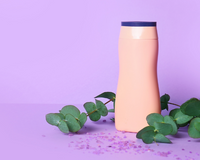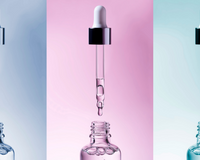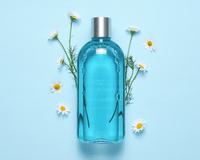Face Moisturizer
Face moisturizer is an essential component of any effective skin care regimen. These simple, yet effective, products aid in the development of a solid foundation for skin that appears and feels healthy, smooth, and hydrated. Moisturizers, on the other hand, are not a one-size-fits-all skincare necessity, and selecting the right one for your skin type can make all the difference. Continue reading to learn how to choose a facial moisturizer that best addresses your skin's specific needs while also supporting your skin's natural moisture barrier.
Facial moisturizers come in a wide range of formulations, from SPF-protected daytime moisturizers to gel-based formulas and rich creams devised for extremely dry skin. Whatever type of face cream you choose, these products have one common thread: they are excellent at supplying much-needed hydration to your skin. Facial moisturizers should always be fragrance-free, non-comedogenic, and contain three essential ceramides to help restore and maintain your skin's natural barrier. We've uncovered the best facial moisturizers for each skin type, as well as the most important factors to consider when trying to integrate each into your daily skincare routine, below.
Skincare Myths About Face Moisturizer
When the skin doesn't keep enough moisture in, it can become dry or rough. This happens because of the environment, how often you clean or bathe, or if you have a medical condition.
You can protect your skin's barrier by moisturizing your face. It also helps to keep your skin from becoming dry, or to help you get your skin back to normal after it has become dry. Moisturizer protects your skin from the outside world, which can be cold and dry. This can make your skin even drier. Moisturizing also helps to rehydrate and make the skin more able to hold water. There are products that can be used to help rehydrate the outer layer of the skin, keep moisture in, and protect against things like the weather.
Although many people believe that if their skin isn't dry or flaky, they can skip moisturizer, this is an important skincare step that can benefit all skin types. Not all moisturizers clog your pores or leave your skin feeling greasy. Natural daytime and nighttime facial moisturizers are all "non-comedogenic,". This means they are specially formulated with ingredients that will not clog your pores. Using a moisturizer twice a day after cleansing can help with a variety of skin issues. These issues can vary from dryness to visible signs of aging.
For daily sun protection, choose a daytime moisturizer that also contains broad-spectrum sunscreen. Look for multi-tasking moisturizers that contain ingredients like ceramides, hyaluronic acid, and niacinamide to help hydrate your skin while also restoring and maintaining its natural barrier.
Face Moisturizer For Skin Type
The first step in determining which moisturizer use in your daily routine is to determine your skin type. Normal, mixed, dry, oily, and sensitive skin are the five main skin types. Although all skin types benefit from everyday washing and moisturizing, certain components and moisturizing treatments are better suited to each skin type's specific demands. Knowing your skin type will help you make informed choices when it comes to selecting a moisturizer which will keep your skin looking healthy, moisturized, and toned.
A broad-spectrum sunscreen and a non-drying face cleanser are two essential products that should always be included in every regular skincare routine. Facial moisturizers, as one of these essential products, come with a dizzying selection of options. Fortunately, you can cut down your selections by using your skin type as a starting point.
People with mixed skin have skin that is drier in some regions and oilier in others, as the name implies. Excessive enlarged pores around the T-zone and dryness around the cheekbones are common symptoms. Light to medium-weight moisturizes that are very well enough to satisfy the diverse demands of mixture skin are best for this skin type.
Do Face Moisturizers Really Moisturize Your Skin?
The name "moisturizer" has invented by marketers, believe it or not. It was founded on the misconception that moisturizers only hydrate the skin, whereas, in reality, they do so much more.
At its most basic level, a moisturizer is a topical treatment that alleviates the symptoms of dry skin and smooths rough skin. A key aspect of moisturizer is to capture water and keep it from escaping, rather than simply wetting your skin. So, this might erode its natural protective barrier. The moisturizer also restores the skin barrier, supplies anti-aging and/or anti-inflammatory substances. Hence, it relieves discomfort from skin disorders including dermatitis and eczema, depending on what else is in the mix.
Using a moisturizer can make your skin look stay moist, reduce dryness, and protect it from the outside world. Choose a product that's right for your skin type, or talk to a dermatologist to get the best skincare plan for your needs.
How To Apply Face Moisturizers?
When people take care of their skin, moisturizers have been an important part of it for many years. Even Cleopatra said to bathe in milk because it was good for her skin. There are a lot of reasons why this is the way it is. Moisturizers have shown to make the stratum corneum, the skin's outermost layer, more water-rich, which makes the skin less dry. As a bonus, they've also said to fight the signs of aging and make your skin look better.
There are so many moisturizers out there that it can be hard to know which one to use or how to do it right. To get glowing, soft skin, read on. After you clean your face, moisturizers should put on your skin. Because they keep your skin from drying out after you wash it. Even when the skin is slightly damp, they work best because they keep the moisture in.
This can do with a baby washcloth or with a cotton pad. You should lightly scrub your skin to remove dead skin cells. This helps to remove the dead skin on your face so that the moisturizer can get into your skin. Once your face is clean and dry, apply a pea-sized amount of moisturizer to your face with your fingertips. Lightly rub it in with circular motion until it's all absorbed.









